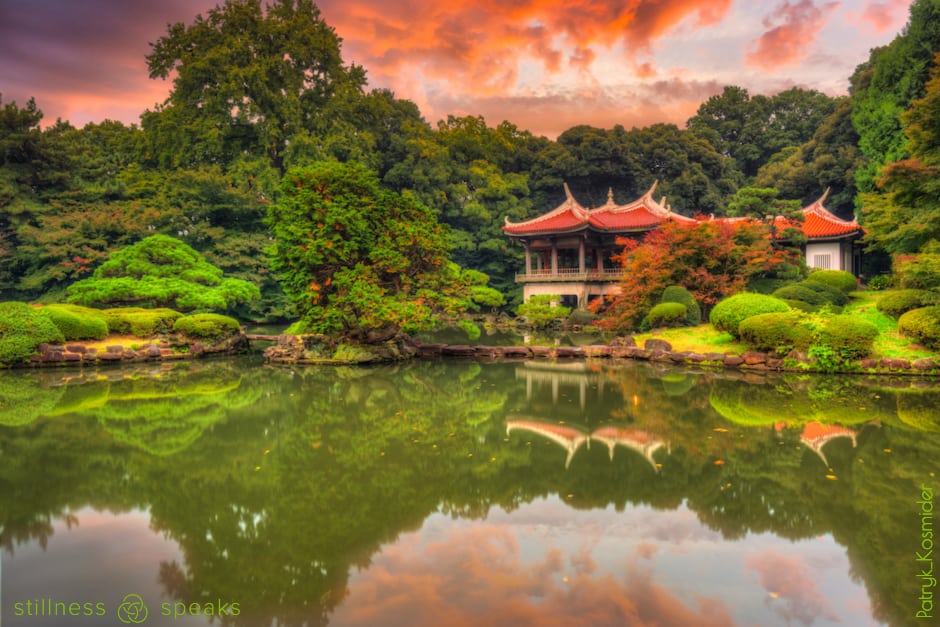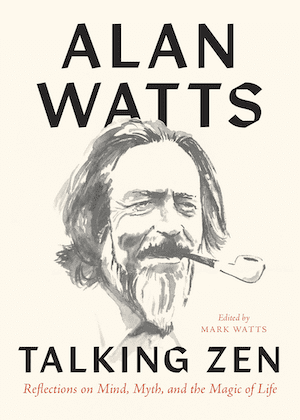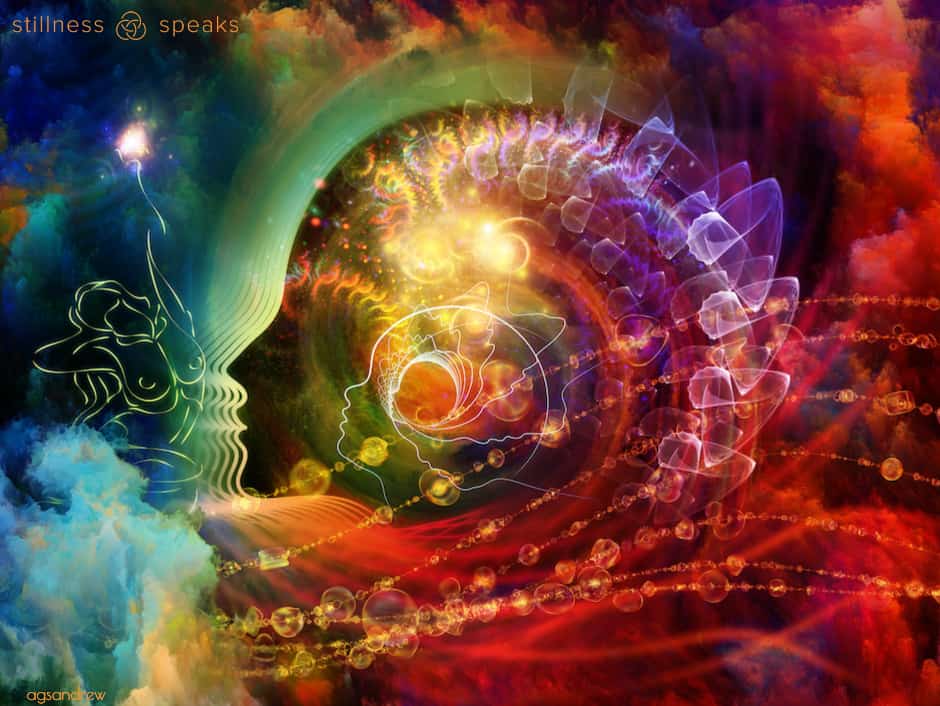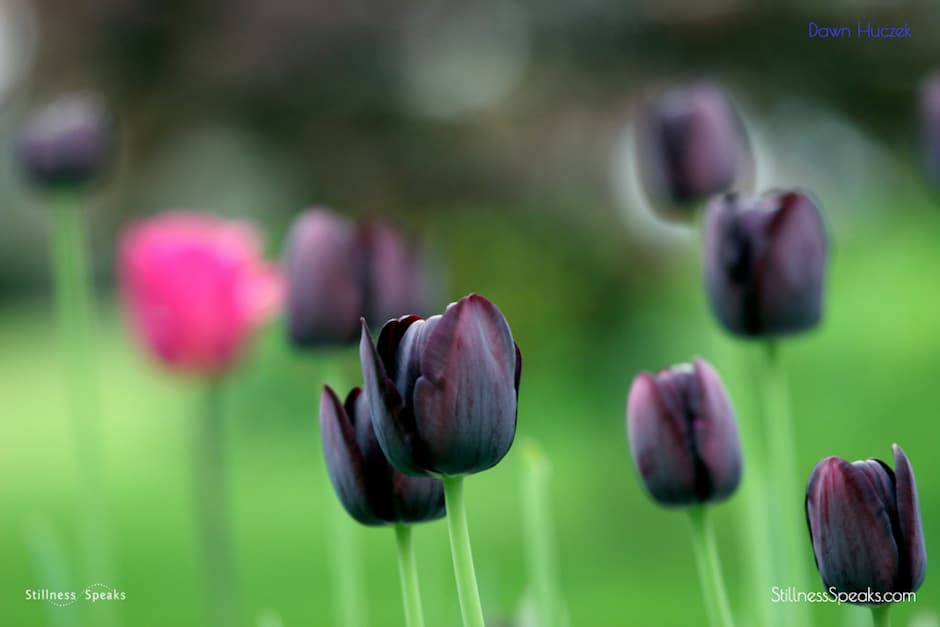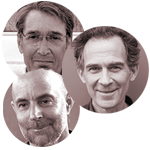taoist ways: ” … The philosophy of Tao sees humanity as a part of nature rather than dominating it …” ~ Alan Watts
” … {Zen} is a practice rather than a theory … the aim of Zen is to sweep away all formulae, symbols and doctrinal substitutes which stand between the individual and enlightenment … “ ~ Alan Watts
Indeed just like Zen itself Alan Watts cuts through complexities and expresses the essence of his target subject – Zen.
Alan’s second book on Zen – The Way of Zen – was instrumental in “… introducing millions of Western readers to Eastern thought in general, and to Zen in particular …” and was published in 1957 … but well before that – sometime before 1940 – he had started speaking publicly … and by 1950 he had “… become more comfortable as a speaker, and he rarely used more than a few general notes of subject areas to be covered. By 1960 he had mastered the ability to speak extemporaneously for hours on end, often weaving together the ideas of cultures separated by thousands of miles and many centuries. By the time of his passing in 1973 Watts had authored more than twenty significant books on comparative philosophy and recorded hundreds of hours of public lectures and seminar sessions …”
Alan’s most recent (2022) book, Talking Zen: Reflections on Mind, Myth, and the Magic of Life, best summed up – in the Introduction by Mark Watts (Alan’s son and editor of the book) – as “… a synthesis of Alan Watts’ further explorations of Zen that have been adapted from spoken word archival recordings. This is not primarily an account of how Zen evolved but is instead a story of Zen in life, of insights, tales, and experiences as they were told by the author to live audiences over a period of nearly forty years. In selecting the lectures to be included I chose the talks that embodied the spontaneous and uncontrolled aspect of Zen most fully, and which left me with a compelling feeling that something extraordinary had happened …”
Some of his first lectures from 1933, ’39, and early 40s comprise the early chapters with the remaining from his lectures in late 1954, early ’55, June and autumn ’65, March ’67, and ’71.
The June ’65 talk was part of a 1965 Esalen (Big Sur, California, USA) seminar on the tradition of Taoism. That entire talk (the first session of the seminar) is captured in the chapter titled: Taoist Ways …
So today we offer an in-depth preview of the book through the excerpt of the entire chapter Taoist Ways … in which Alan covers the 3 key elements of Taoism:
… in part 1: What’s Wu-Wei And Why Is It Important?, Alan talks about the principle of wu wei or “not forcing” which is the underpinning for cooperation : “… All interrelationships of nature … whether friendly … or conflicting … are actually forms of cooperation. This is called “mutual arising” …” … and makes the case for the importance of wu-wei, i.e., if you “… are able to act “without forcing,” your life is spontaneous, a life that is so of itself, natural, not forced, and not unduly self-conscious …”
… in part 2: Order & Li: What & Why Important?, Alan talks about the principle of li that is “… a very useful concept in understanding the sort of natural order of mutual interdependence and mutual arising …” …
… in part 3: Seeing Through The Great Social Lie?, Alan briefly delves into the topic of “thinking about thinking” … including living “… in the realm of thinking about thinking with full spontaneity …” and “… liberation of the mind from symbols …” … which ultimately leads to the “great social lie” …
This series is part of our ongoing Shambhala Publications series that offers substantive previews of selections from Shambhala Publications new and classic titles …
All italicized text here is adapted from Talking Zen by Alan Watts, © 1994 by the Alan Watts Electronic University. This edition published 2022. Reprinted in arrangement with Shambhala Publications, Inc. Boulder, CO. Shambhala Publications has also generously offered a free downloadable PDF of the Table of Contents (link is at the bottom of the post).
You can purchase the book at Shambhala Publications or Amazon.
So here’s Alan on the Taoist Ways …
Taoist Ways: What’s Wu-Wei And Why Is It Important?
” … Wu-wei means always acting in accord with the pattern of things as they exist …”
[…]
When we speak in Taoism of following the course of nature, or following the way, what we mean is doing things in accord with the grain. This does not mean we do not cut wood, but that when we cut wood we cut along the grain, where the wood is most easily cut. In interacting with other people, we try to interact along the lines that are the most genial. This is the great, fundamental principle called wu wei, or “not forcing.” Wu wei is often translated as “not doing,” “not acting,” or “not interfering,” but “not forcing” seems to me to hit the nail on the head. We never force a lock because we will bend the key or break the lock. Instead we jiggle it until it turns. Wu wei means always acting in accord with the pattern of things as they exist. When we follow the principle of wu wei, we do not impose any kind of extraneous force on a situation, because such force, by its very nature, is not in accord with the situation.
[…]
Click here for the entire Part 1 … including Why it’s important? …
Taoist Ways: What Is Order & Li & Its Importance?
“… The tao is a certain kind of order, and this kind of order is not quite what we call order … when you look at a plant it is perfectly obvious that the plant has order … In the Chinese language this is called li …”
Now another term that is important, although it has greater use in Neo-Confucian philosophy and Buddhism than in the writings of Lao-tzu, is li. This is a very useful concept in understanding the sort of natural order of mutual interdependence and mutual arising. Li originally meant the markings in jade, the grain in wood, or the fiber in muscle. It is defined nowadays in most dictionaries as “reason” or “principle,” but this is not a very good translation. Joseph Needham once suggested that “organic pattern” was an ideal translation, and this is certainly preferable. The markings in jade are regarded as what make it beautiful. As you look down at the water here, you see patterns in the foam when a wave breaks. As you watch those patterns, you know they will never make an aesthetic mistake. They are not symmetrical and they are very difficult to describe. They are wiggly, as are the markings in jade, and the grain in wood, which we also regard as beautiful. All these things exhibit li; they all have distinct forms that we can distinguish quite clearly from what we call a mess. The foam patterns of waves, the mineral patterns of jade, and the vegetable patterns of wood are extraordinarily orderly, yet they do not have an obvious order, and nobody can ever pin this organic order down completely. We know that it is order and that it is something quite different from a random mess, but there is no way of defining that order completely.
[…]
Click here for the entire Part 2 … including its importance? …
Seeing Through The Great Social Lie?
“… My inside is not separable from the outside world … the one who either dominates the world or suffers under it … has vanished … never was there …”
“… The fallacy of the continuous self is pointed out by the saying, “No one perceives anything, and no one experiences anything— there is simply seeing and experiencing …”
” … You are awareness. Awareness is another name for you … “ ~ Ramana Maharshi
Ramana Maharshi and Alan Watts words are different but both are still talking about our true nature : awareness … and if one is identified with awareness (vs the form of the “one” who is aware … vs the object of awareness) then the illusion of one’s form is revealed (it is dissolved) … and this is at the heart of Alan’s “great social lie” … which he covers in the closing segment of his talk on Taoist Ways …
[…] in the phenomenon called experience the reality is not an encounter of the knower and the known. The reality is the experience that can be termed as having two aspects, two ends, the knower and the known, though this is only a figure of speech. In a neurological sense, everything you see is yourself. What you are aware of is a state of your nervous system, and there is no other knowledge whatsoever. That does not mean that your nervous system is the only existing reality, and that there is nothing beyond your nervous system, but it does mean that all knowledge is knowledge of you, and that therefore, in some mysterious way, you are not different from the external world you know. If you see, then, that what you experience and what you are are the same thing, then take it a step further and realize also that you are in the external world you are looking at. Just as I am in your external world, you are in my external world, but I am in the same world you are. My inside is not separable from the outside world. It is something that the so-called outside world is doing, just as it is doing the tree, the ocean, and everything else in the outside world. Now, isn’t that great! We have now completely eliminated the person in the trap, the one who either dominates the world or suffers under it. It has vanished, it never was there, and when that happens, you can play any life game you want. You can link the past, the present, and the future together and play roles, but you know that you have seen through the great social lie that one accumulates or owns experiences, whether memories, sights, sounds, or other people. We are always building up our self as the haver of all this, but if you think that, you have been had!
Click here for the entire Part 3 …
Stay tuned for more substantive previews of other books (both new and classic) in this ongoing Shambhala Publications series …
All italicized text here is adapted from Talking Zen by Alan Watts, © 1994 by the Alan Watts Electronic University. This edition published 2022. Reprinted in arrangement with Shambhala Publications, Inc. Boulder, CO.
And, click here for the free, downloadable PDF of the Table of Contents.
You can purchase the book at Shambhala Publications or Amazon.
And, may you realize the “life gems” offered in the … taoist ways … and …
May you remain safe and healthy.
